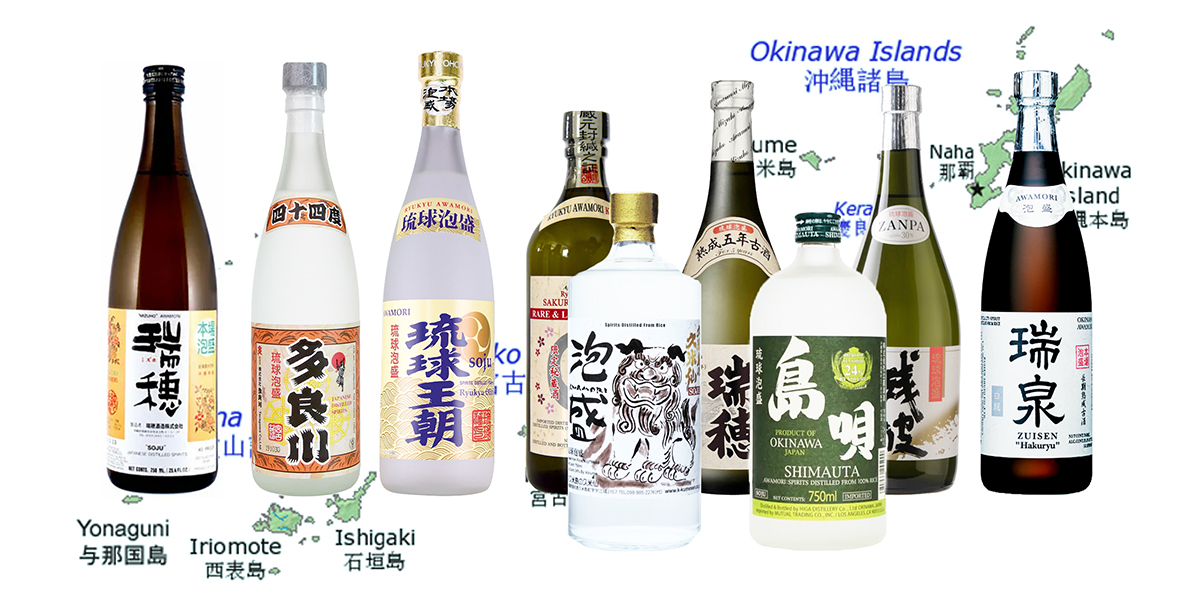Awamori is Japan’s oldest spirit and the original shochu. This page covers its history, production methods, and ingredients. Flavor profiles and major brands are also explored.

Awamori Ingredients and Production
Awamori uses Thai-harvested Indica rice, and all of it is inoculated with black koji (kuro koji). The grains are broken to promote water absorption and koji development.
Black koji creates an acidic moromi, which protects the mash from spoilage in the tropical environment. Awamori uses a single-step mash, where all the rice is added at the same time.
Kusu and Shitsugi
Kusu is Awamori aged for a minimum of three years. The aging often happened via the fractional blending shitsugi method.
Awamori made in different years are aged in ceramic urns. When a portion of the oldest Awamori is taken for use, it is replaced with the same amount of Awamori from the next oldest urn. This process continues until the last urn has new Awamori added.
Shitsugi is very similar to the solera system of aging sherry.
The History of Awamori
Distillation techniques and technology reached the Ryukyu Kingdom (present-day Okinawa) around the 15th century via Southeast Asia.
Through the Edo period, only people of special status were allowed to drink Awamori. But by the Meiji, distilleries had spread across the archipelago. And before World War II, kusu over 100 years of age was often passed on from one generation to the next.
WWII was horrific for Okinawa. Shochu distilleries, black koji, and yeast were all lost to the fighting. The industry slowly rebuilt from there.
Ryukyu Awamori
Technically, Awamori doesn’t have to be from Okinawa. But when it is, it can be called “Ryukyu Awamori,” which is a geographical indication.
Flavor Profile and Service
Awamori fits into two broad flavor categories: unaged and kusu.
Kusu is rich and smooth with grainy, nutty, and spicy notes. Vanilla and matsutake mushroom are classic markers for kusu.
Baron Sho Jun, a son of the last Ryukyu King, said that kusu had three smells: hair wax, ripe ground cherries, and billy goats. Delicious.
Neat is probably the best way to serve kusu. A small ice cube or a splash of water works too.
Newer, fresher Awamori tends to be fruity, mild, and refreshing. This easy-drinking nature is accentuated when served on the rocks, with water (mizuwari), or in a highball.
Popular Brands
There are a number of Awamori brands that are exported. Here is a list of some of the most popular: Zuisen “Hakuryu,” Mizuho, Ryukyu Ohcho, Taragawa, Sakura Yama Kawa Kusu, Chuko Kusu, Shimauta, and Hanashimauta.